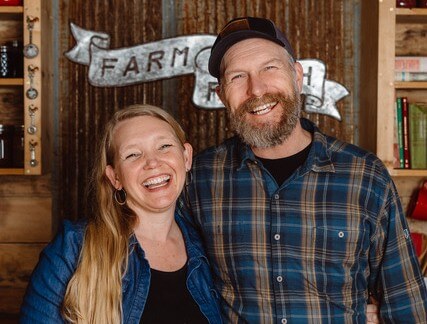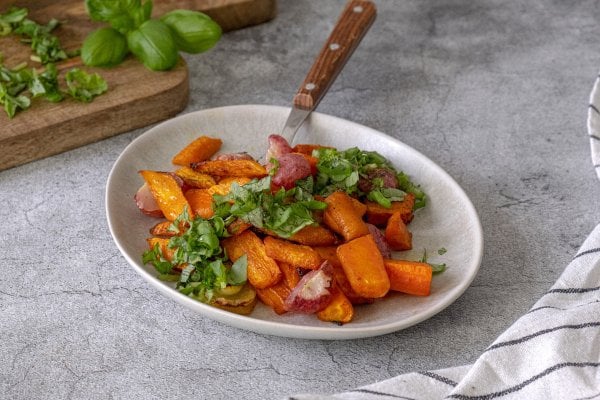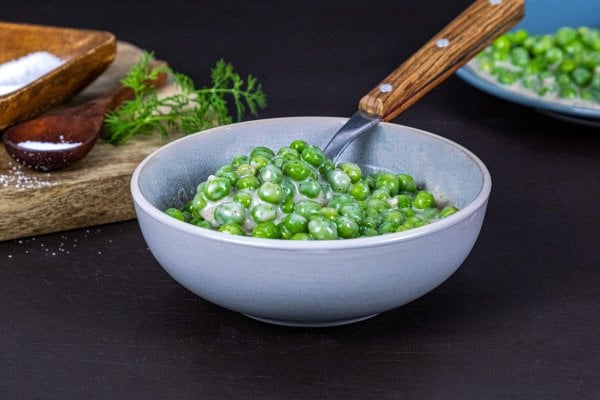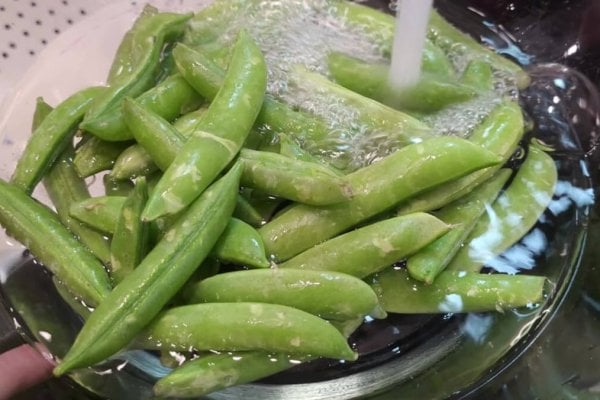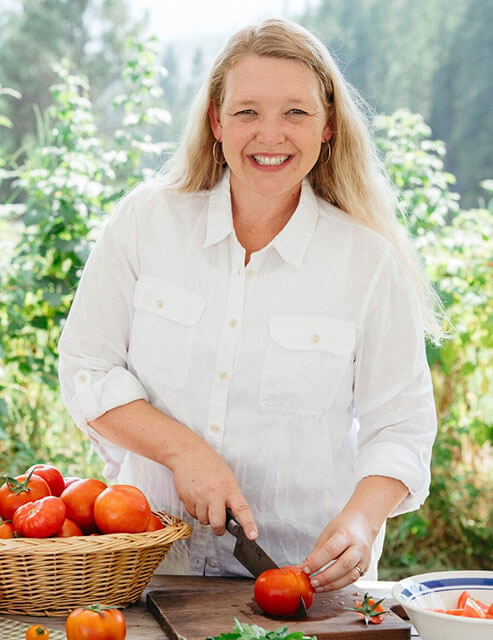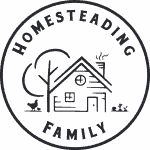With more viruses popping up over the past decade, it’s important to understand and know how to use medicinal herbs, more specifically, antiviral herbs. Join me with Dr. Patrick Jones as we discuss the common antiviral herbs and their uses.
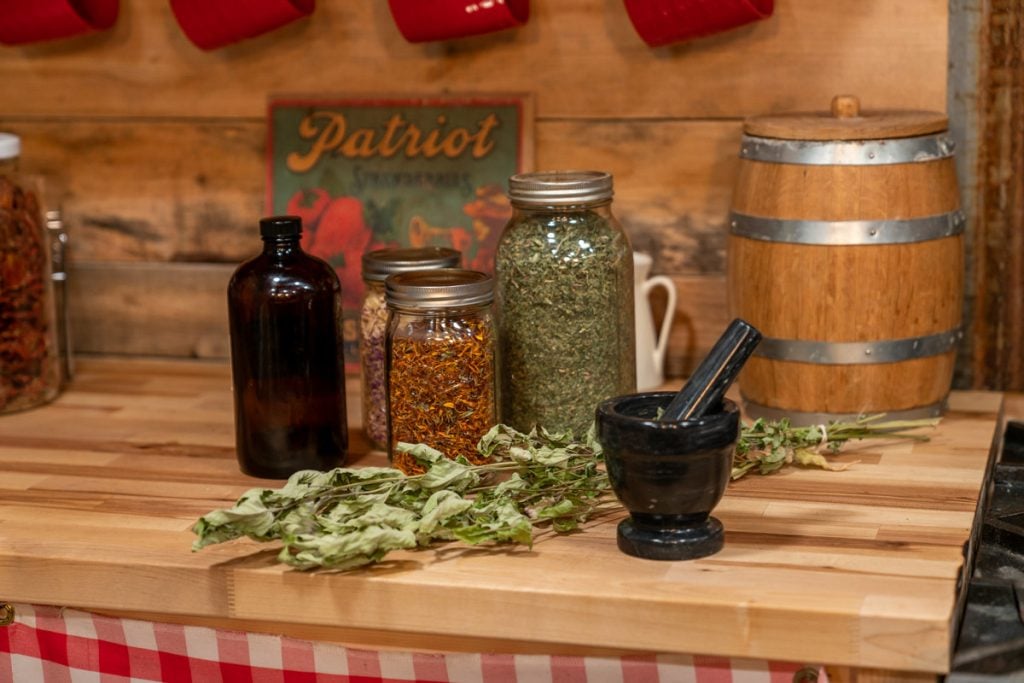
Why I Love Herbal Medicine
You all know I love my cottage garden (medicinal herb garden). I’ve also discussed the different medicinal herbs and their uses, how to get started using medicinal herbs, how to use herb medicine safely at home, how to use medical herbs on animals, and how to forage for medicinal herbs in your own backyard.
I’ve even shared some of my favorite herbal remedies, such as turning powdered herbs into capsules, making herbal tinctures, my herbal remedy for hay fever, our homemade antibiotic ointment, as well as growing, harvesting and preserving many other herbs. (Check out our herbs archives here.)
But the fact is, the world is changing. Viruses are on top of us all the time right now, and I see many people struggling to get better and get over these viruses. It seems like issues that used to be no big deal and a basic “bug” are now much bigger issues lasting much longer.
Sadly, many people aren’t getting the nutrition our bodies need to fight viruses. Furthermore, we’re overloaded with many more toxins than our great-grandparents were exposed to.
With rumblings of the next big pandemic being right around the corner, I thought it a great idea to talk to herbalist Dr. Patrick Jones (aka Doc) to hear his take on these novel viruses and how we can be prepared.

About Doc Jones
Doc Jones is a practicing veterinarian and traditional naturopath. He also practices as a clinical herbalist (for man and beast). For many years, he’s seen the power of herbs bless the lives of his veterinary patients and human clients. As a result, he has a passion for herbal medicine and an evangelical zeal to teach others about these wonderful plants.
He does a lot of lecturing, workshops and herb walks to help people roll up their sleeves and get beyond the theoretical and into real applications.
The culmination of this passion for teaching others is the HomeGrown Herbalist website and the HomeGrown Herbalist School of Botanical Medicine. I have been a member of his school for multiple years now and have learned so much from his school.
He and his wife Lori are the parents of 15 children and grandparents of 11 grandchildren. They live in Buhl, Idaho, on two acres, where they grow and process over 100 different medicinal plants.

Viral Infections vs. Bacterial Infections
Have you ever wondered the difference between bacteria and viruses? Us, too! That’s why I asked Doc to explain the differences.
Bacterial Infections
Bacteria are living organisms. According to Doc, they usually attack the body locally by entering through a weakness in the body’s outer defenses: a bite wound, a break in the skin, an abrasion, etc. They can also enter through weaknesses in the mucous membrane: tonsillitis, strep throat, mastitis, salmonella and other gastrointestinal issues.
Typically, bacterial infections cause more local inflammation and pain, as well as more pus. These are some of the ways we can tell whether we’re dealing with a bacterial infection or not.
Viral Infections
Viruses are not living organisms; they’re actually little pieces of DNA code that require a living cell (a “host”) to do their thing. If a virus inserts itself into a cell, it takes the place of the host cell’s DNA or RNA and rewrites the blueprint for that cell.
Viruses essentially hijack the code of your cells. If a cell’s job is to make a specific enzyme, a virus can hijack that cell to instead make more baby viruses (replicate).
Doc says viruses tend to be a broader, more systemic issue. Instead of localized pain only, your whole body is likely to feel achy and worn out as well. For example, when you have the flu, your lungs aren’t the only thing that hurts; you also feel worn out and crummy all over your body.
Viruses aren’t susceptible to antibiotics. Therefore, the medications that pharmacists and physicians use to kill bacteria have no impact on viruses. There are a few antiviral drugs out there (Tamiflu, for example), but not very many. Usually, with viral infections, the immune system kills the virus.
This is not the case with herbs! Many herbs directly inhibit viral attachment or replication. There are also immune-stimulating herbs. So, we have some tools for fighting viruses that physicians don’t have.

Antibiotics: To Take or Not To Take?
Doc agrees that antibiotics seem to be widely overprescribed these days. He shared that oftentimes, with viral infections, secondary bacterial infections can occur. Doctors may prescribe antibiotics to kill off the secondary infection when this happens.
However, prescribing antibiotics for a viral infection (where no signs of a bacterial infection have occurred) isn’t wise. This can create antibiotic-resistant strains of bacteria that can do much more harm. Unfortunately, this is something we’re already seeing happen. (Source)
According to Doc, if you can treat a virus with herbs at the onset, you’re much less likely to contract a secondary bacterial infection.

Two Types of Herbs
When considering herbs to help treat a virus, Doc says he reaches for two types: antiviral herbs that specifically interfere with cellular attachment or replication and herbs that boost the immune system.
Antiviral Herbs
Antiviral herbs that interfere with cellular attachment prevent the virus from attaching to the cell. These herbs are great to take at the first sign of illness before the virus has a chance to settle in.
Once a virus has taken hold, you’ll want to focus on herbs that interfere with cellular replication. These herbs will help keep the virus from replicating even if it infects the cell.
These antiviral herbs include:
- Elder/Elderberry (Sambucus canadensis) – Research suggests that elderberry may relieve flu symptoms or other upper respiratory infections. (Source) Learn how to make homemade elderberry syrup or elderberry gummies. Learn more about the benefits of elderberry here.
- Sweet Wormwood (Artemisia annua L.) – Sweet wormwood is an annual herb native to Asia and other continents and has been used for the treatment and prevention of fever, chills and malaria in traditional and modern medicine. (Source)
- Garlic (Allium sativum L.) – Garlic is a common herb consumed worldwide as a functional food and a traditional remedy for the prevention of infectious diseases since ancient times. Garlic and its active organosulfur compounds (OSCs) have been reported to alleviate a number of viral infections in pre-clinical and clinical investigations. (Source)
- Pine Needle (P. densiflora) – This study shows pine needles (P. densiflora) to be a good anti-influenza viral source. It also shows promise to have bioactive compounds against influenza virus outbreaks in the future.
- St. John’s Wort (Hypericum perforatum) – Hypericin, which is found in the stems and petals of St. John’s Wort, has, in in-vitro studies, been shown to fight off many viruses, including influenza and herpes. (Source)
- Lemon Balm (Melissa officinalis L.) – “Lemon balm has been widely used for reducing stress and anxiety, increasing appetite and sleep, reducing pain, healing wounds, and treating poisonous insect bites and bee stings for a long time. Today, research has shown that this plant can also fight viruses including Severe Acute Respiratory Syndrome Coronavirus 2 (SARS-CoV-2), Herpes Simplex Virus (HSV), and Human Immunodeficiency Virus (HIV).” (Source)

Immune-Boosting Herbs
Herbs that boost the immune system are a more general way of helping treat a virus. These include herbs that help your body send out more white blood cells or increase enzymatic reactions and turn on your immune-fighting defenses.
Many herbs have both antiviral and immune-boosting properties. All of the antiviral herbs above will also help boost the immune system. The following herbs are also great immune-boosters:
- Echinacea (Echinacea purpurea, Echinacea angustifolia or Echinacea pallida) – Lab studies have found that echinacea can increase the number of white blood cells in the body. These cells attack foreign invaders and protect you from infection. (Source)
- Olive Leaf (Olea europaea L.) – Olive leaf extracts (OLEs) contain high amounts of polyphenols. Several lines of evidence support the cardioprotective, anti-oxidant and anti-inflammatory activities exerted by OLEs. (Source)
- Ginseng (Panax ginseng) – Ginseng has been extensively reported to maintain homeostasis of the immune system and enhance resistance to illness or microbial attacks by regulating the immune system. (Source)
- Chaga (Inonotus obliquus) – There have been favorable experiments done on the immune-enhancing effects of chaga during chemotherapy. (Source)

Focus on Nutrition First
Doc reminds us that it’s always important to remember that if you’re feeding your body everything it needs, your immune system will be stronger and less likely to fall prey to viruses and bacteria.
Focusing on a real food diet that’s high in vitamin C and antioxidants can really give our body the tools it needs to ward off viruses and bacteria without medical intervention. (Source)
That’s why I love taking my homemade probiotics on those days my diet may not quite be up to snuff.

Doc Jones’ Protocol When Feeling Sick
The key to any treatment, whether viral or bacterial, is early intervention. Doc’s recommendation is to take herbs “early, often and after.”
Early
You want to treat illnesses (specifically those that are viral) as early as possible. That means the first tickle in the back of your throat, the first sign of stuffiness in your nose, an achy body or a fever… start taking herbs.
Often
Then, keep taking herbs often. Herbs don’t work the same way as over-the-counter medications. You don’t want to go four to eight hours between doses. Ideally, you’ll be taking herbs every three to four hours when actively dealing with an illness. If you’re simply trying to prevent an illness and boost your immune system, taking herbs one or two times per day is sufficient.
After
Finally, don’t stop taking herbs once you’re feeling better. Give your body the best chance to completely ward off the illness by continuing to take the herbs for at least a few days after feeling better to make sure no secondary infections occur.
According to Doc, beyond using herbs to treat an illness, it’s also wise to supplement with extra vitamin C, avoid sugar and get plenty of rest. These are all things we should be doing whether we’re fighting an illness or not, but especially when our body is under attack from illness.

Using Herbs Preventatively
If you have someone in your household who is starting to get sick, you can also take herbs preventatively. Doing so doesn’t mean you won’t get sick, but you’re giving your body the best fighting chance to boost your immune system and speed up healing if/when you do.
Doc’s Recommended Herbs
Doc has a couple of herbal formulas he reaches for when he feels like he’s getting sick. The first is called Immunity-Support, which is an immune-boosting tincture containing Echinacea, Garlic, Astragalus, Olive Leaf, Siberian Ginseng and Chaga.
The other remedy he uses is called ShooFloo which is a respiratory support tincture containing Echinacea, Elderberry, St. John’s Wort, Sweet Wormwood, Yarrow and Grape Leaf.

Doc’s COVID Treatment Protocol
According to Doc, pine needle (P. densiflora) and sweet wormwood (Artemisia annua) are both great for treating Coronaviruses. A study was done on artemisinin, the chemical compound found in sweet wormwood, on the SARS epidemic years ago and showed great success with it. (Source)
If Doc thinks he’s dealing with a respiratory issue, he grabs the “Three Amigos”: pine, sweet wormwood and chaga. He’ll take it at the first sign of illness and continue taking it for three days after feeling better.

Vaccines vs. Herbs
The beauty of herbs is they don’t need to be adjusted for each new strain of virus. A vaccine, on the other hand, is making antibodies to a very specific protein on a very specific cell. The vaccine works great until that protein changes, which is what happens with viruses.
An herb simply interferes with the whole class of viruses (no matter the mutation or change) attaching to cells at all. It doesn’t matter the strain of the virus as it enters the cells the same way, so the herbs always work.
According to Doc, vaccines have done a lot of great things in this world, but there need to be stronger regulations on their use. Whereas elementary aged kids used to get two vaccines, they’re now receiving 14. (Source) Doc says this isn’t because the disease incidences have increased, it’s because the marketing has improved.

Protection From Future Viruses
Doc shares that any future virus will be a strain of an existing virus. Either a corona, influenza, rhino, herpes, etc. There are only so many families of viruses, so it will likely be some mutation from these families.
Once we know the family the virus came from, then we simply choose the herbs that help fight those viruses and the symptoms that accompany the virus.
Doc doesn’t recommend simply going to the internet and searching willy-nilly. He recommends using a search engine such as Google Scholar or medical books with studies done on the specific herbs.
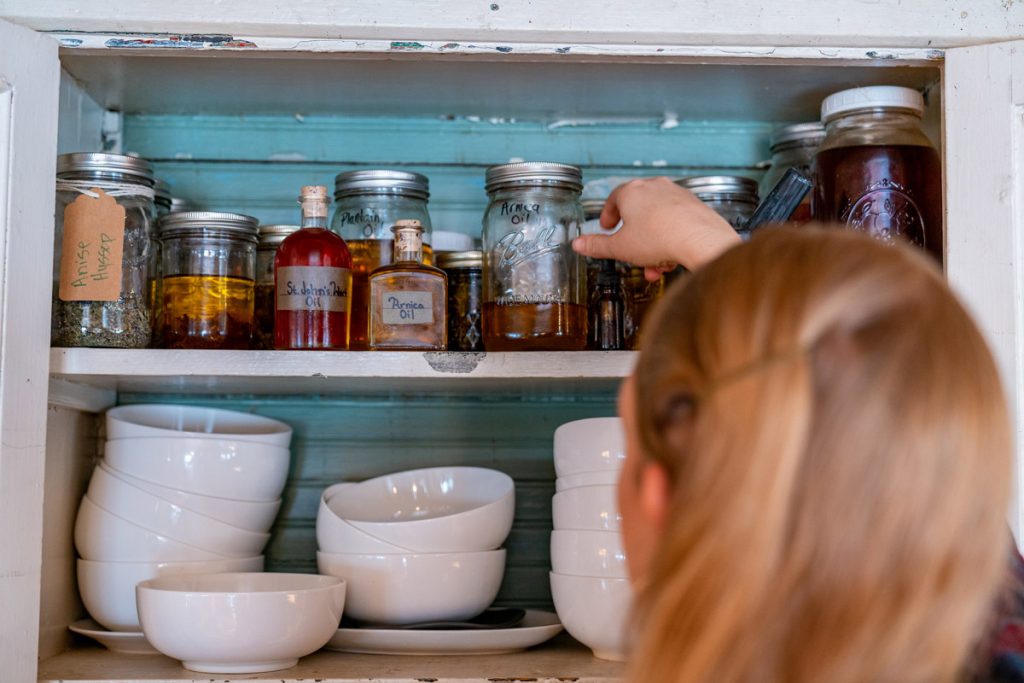
Building Your Herbal Medicine Cabinet
Even though we grow a large cottage garden filled with dozens of medicinal herbs, there are still herbs that I’m either not yet growing or can’t grow in my climate. I asked Doc what his recommendations are for stocking a home apothecary and what all of us should have.
He said we should all have the following:
- Antiviral Herbs – This includes elderberry, garlic, sweet wormwood, pine and lemon balm.
- Immune-Stimulating Herbs – Including garlic, astragalus, ginseng and olive leaf.
- Herbs to Decrease Cytokine Storms – Grape leaf is Doc’s preferred cytokine-reducing herb. Cytokines are the chemicals the body releases to attract immune responses. Cytokines are a good thing and many herbs work by stimulating this response in the body. However, a cytokine storm is when your body produces too much of an immune response, and your body actually drowns in its own immune response with fluid in the lungs.
- Symptomatic Herbs – These are herbs that relieve specific symptoms. Make sure you have herbs for decongestants, expectorants and cough suppressants.
Doc recommends looking at his Respiratory Preparedness Kit and the tinctures included. Then, look at each tincture to see which herbs are included. This can give you a good idea of how to start building up your herbal medicine cabinet.

Tinctures vs. Powdered Herbs
The beauty of herbs is they can be consumed in multiple forms with the same benefits. However, if you’re looking to stock your herbal medicine cabinet for years to come, the best preparation for them is in tincture form.
Powdered herbs are only shelf-stable for about a year. Sadly, some of the herbs you might purchase from the store or online may already be a year old at the time of shipment, so they’ve really degraded by the time you get them.
Ideally, you’ll be growing your own herbs and then tincturing them right away for the most potent herbal remedy possible. Tinctures can sit on the shelf for up to twenty years, so you’ll really be in good shape for a long period of time.

School of Botanical Medicine
Want to learn more from Doc Jones? In the School of Botanical Medicine, Doc has a lesson on which herbs are used for specific viruses. Furthermore, if you’re dealing with something specific, you can jump into the class and go straight to the video with that specific issue to know which herbs to use and how to treat yourself.
You can jump around from class to class or go through the lessons in order. The school is a tremendous database for learning how to use herbs medicinally.
Doc’s final word of encouragement is that memory is usage. Make herbs and tinctures a part of your regular life. Don’t just stick them in the closet for “one day.”
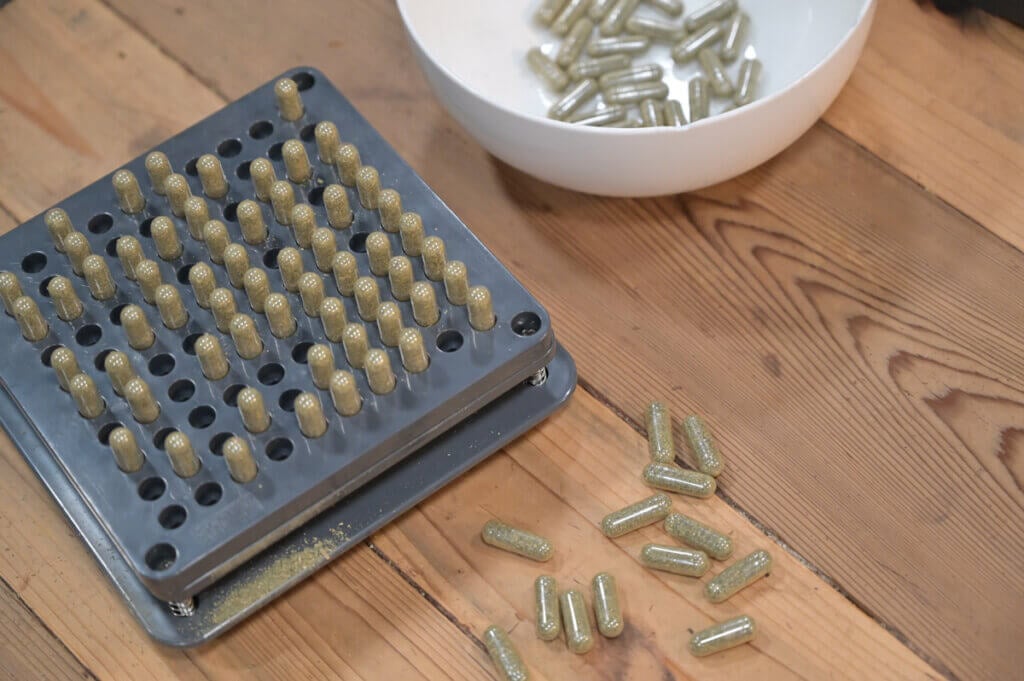
More Posts You May Enjoy
- Easy Home Remedy for Allergies (+ Hay Fever)
- Designing an Old Fashioned Cottage Garden
- 15 Medicinal Herbs To Grow, Harvest & How to Use Them
- How to Dry Fresh Herbs (Oven, Dehydrator, or Hanging)
- Natural Cough Remedy (For all ages)
- Homemade Arnica Salve
- Herbs for Every Season (Kitchen, Garden & Apothecary)
- Using Herb Medicine Safely at Home

